

Azure blue ocean, silky white sand, palm trees, and tranquility. The Maldives is the high-end version of a tropical paradise.
If you glance at a large-scale map, you'll see countless tiny pearls scattered across the ocean’s blue expanse: a vast area of water dotted with just a small amount of land, spread in all directions across the endless horizon. Guidebooks estimate there are nearly twelve hundred notable islands, four-fifths of which rise barely a meter above sea level.
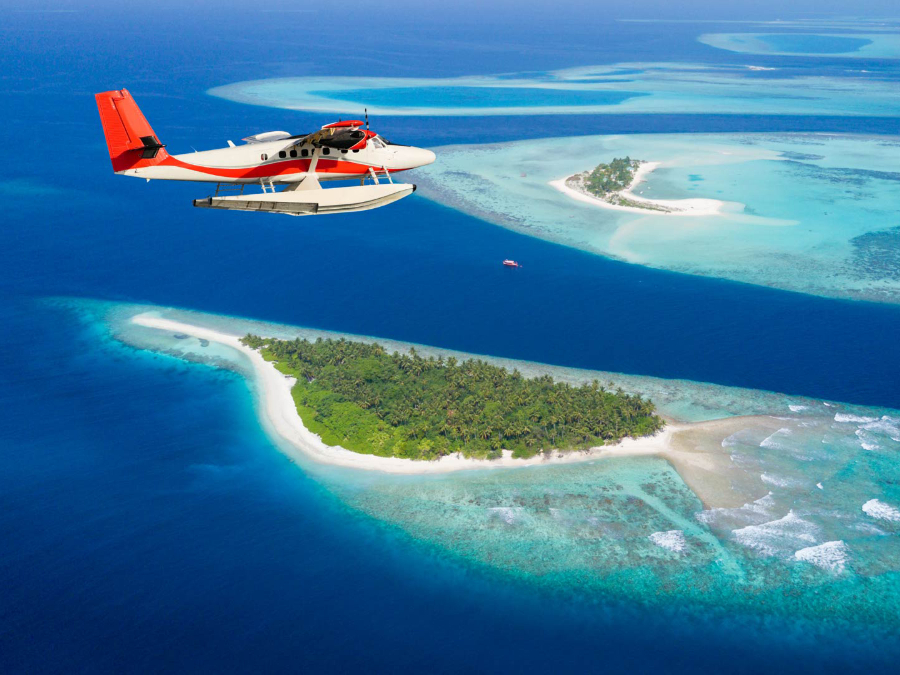
In addition to around two hundred inhabited islands, there are 164 that serve exclusively tourism purposes—typically featuring a single hotel, or more precisely, a resort. These are not the large hotels we might usually imagine, as local regulations prohibit buildings on resort islands from exceeding the height of palm trees. Instead, think of complexes made up of small bungalows or houses, which both travel guides and locals refer to as resorts. The Maldives region shows different faces depending on the season. The dry season lasts from September to April and is the most suitable period for vacationing. Within the dry season, the Christmas period and the following months of January and February are considered peak season. The rainy season spans from May to August, during which one can expect more frequent rainfall, strong winds, and rough seas.
The flight to paradise
Whichever island we choose, our Maldivian adventure always begins in the capital, Malé, as the country’s only international airport is located there. Even the shortest route involves a flight of over ten hours, and when departing from most major European airports—such as Frankfurt—you can typically expect at least one layover. After such a long journey, it makes a big difference whether we arrive exhausted or refreshed. To make the holiday begin the moment we take off, it’s worth choosing the most comfortable way to fly. Emirates is a renowned player in intercontinental travel, and in 2024, it was crowned the winner in the APEX World Class Airline category for its outstanding guest experience and customer service—and for good reason!

Flying in Emirates’ business class is not just about rest, but also a unique experience. The several-hour journey seems to fly by in the spacious, creatively designed cabin, where you can relax, be entertained, or, if needed, even work thanks to the lightning-fast internet connection. The top-quality technology available to Business Class passengers offers countless entertainment options through the ICE interactive system, allowing you to pass the time with movies, games, or music. Culinary delights are guaranteed by exclusive dishes and drinks crafted by some of the world’s finest chefs.
In the comfortable cabin, you can enjoy a wide variety of offerings at any time, whether it’s traditional cuisine, handcrafted dishes, freshly squeezed fruit juices, or fine wines. What’s more, if a cocktail isn't on the menu, the crew will gladly prepare it for you, provided the necessary ingredients are available on board. By the time our plane lands in the Maldives’ capital, we’ll already be richer in experiences, even though our holiday is just beginning!
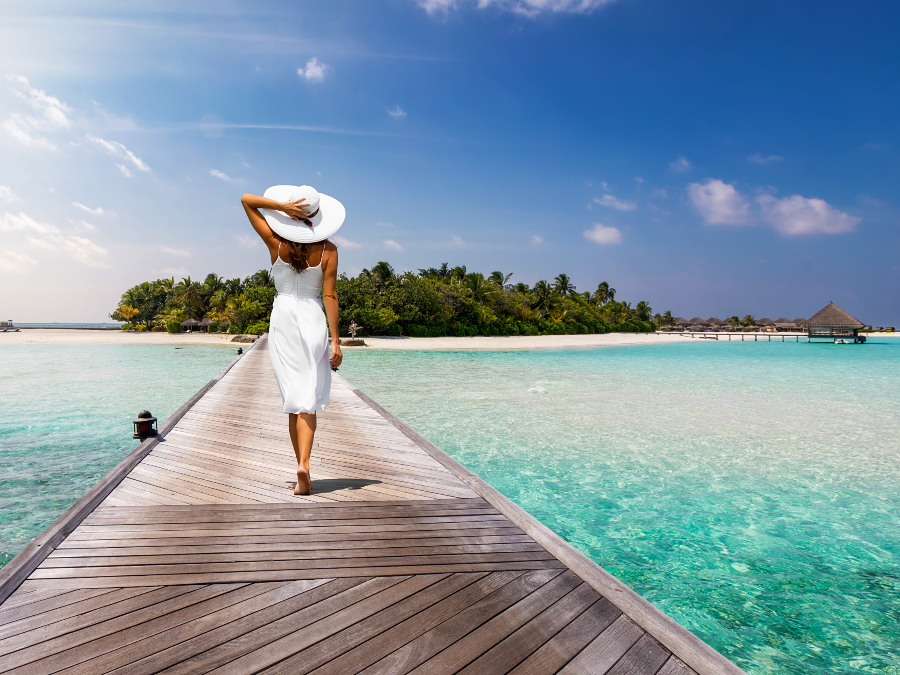
The roughly 200,000-strong city of Malé doesn't offer must-see attractions, and that’s something we don’t particularly mind. The real reason we’ve come to this far-off corner of the world isn’t to explore the city, but rather to venture beyond it, away from the hustle and bustle of civilization. Of course, the distance matters; if we’re headed to a resort farther from the capital, another flight awaits, along with a local seaplane service that connects the islands. It’s an unforgettable experience to view the deep blue canvas of the snow-white archipelago from the bird’s-eye perspective of the noisy turboprop plane. If we head north, we can choose the Fushifaru Maldives Boutique Resort in the Lhaviyani Atoll, where, after a short 30-minute flight, we’ll land on the water, step off the plane onto the dock, and walk barefoot into our earthly paradise.
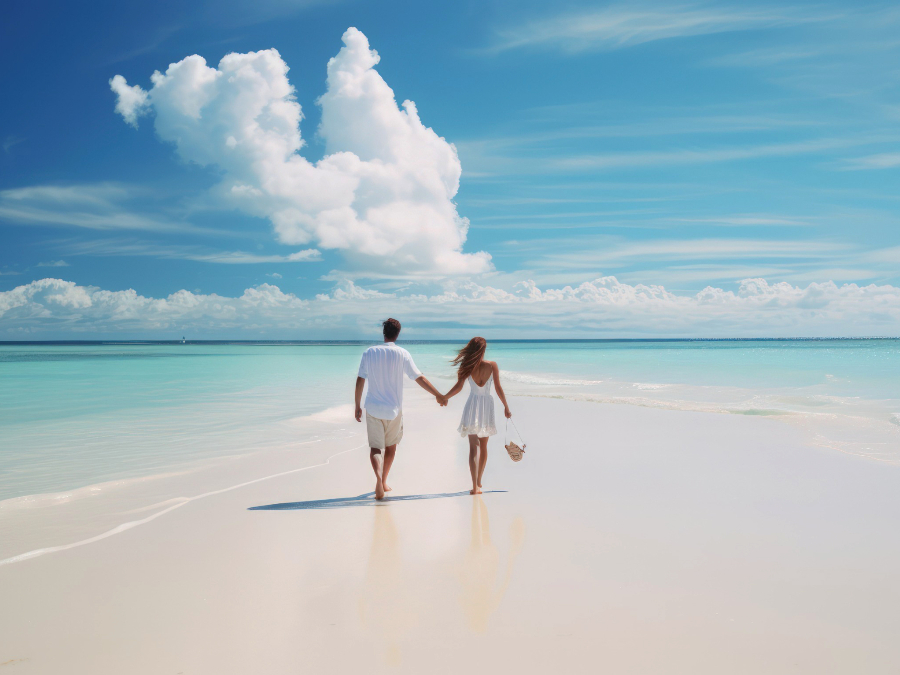
For resorts closer to the capital, we can reach them by speedboat. One such prestigious resort, the Taj Coral Reef Resort & Spa, offers the chance to glimpse some of the Indian Ocean's exotic inhabitants just a few minutes into the ride, with a bit of luck—flying fish, sharks, or dolphins might appear before our eyes.
A sight seen in dreams
The Maldives is not a destination for partying or wild revelries. It's not typical for large groups of friends to visit the islands either. This tropical paradise is a world of quiet, intimate relaxation, a dream for romantic souls and those who wish to unwind. No matter which island we spend our vacation on, we will quickly feel how every moment here is an extraordinary, unique experience. At first, the absence of noise stands out, followed by the soothing presence of natural sounds and whispers. Then, there’s the vibrant kaleidoscope of colors: the countless shades of nature, the surreal variations of blues and greens.
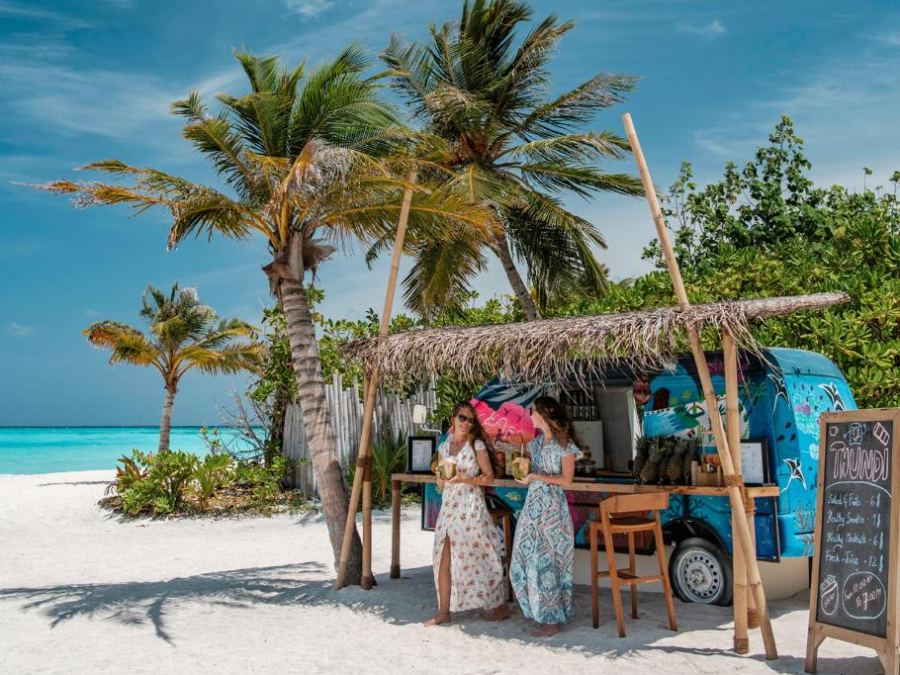
This is the true allure of the Maldives—the magical blend of nature and tranquility. The intimacy of relaxation draws honeymooners, couples, romantics, and increasingly, families with children. Each resort is, in itself, an oasis secluded from the world, where apart from the staff and fellow vacationers, no one else is around. This isolation brings unparalleled safety and pandemic protection to the resorts.
As a Muslim country, there are a few rules that may be unfamiliar to us. Alcohol is only available on the resort premises, and it is strictly prohibited in public places on inhabited islands. When visiting areas frequented by locals, we also need to adhere to a proper "dress code": shoulders and thighs must be covered, and nudism is prohibited even on guest islands.

Although these rules may seem strict, they are hardly noticeable within the resorts (except for the hefty taxes on alcoholic beverages). We are likely to stay on our chosen island, as the beach itself offers everything we came for. The only reason to venture further is to connect with the ocean. A sunset champagne boat trip is definitely something to plan, but it's also worth exploring the marine life by snorkeling or diving, even as a beginner. The kingdom of coral reefs is incredibly lively, full of life, colors, and adventure.
The Maldives is almost entirely made up of coral islands. Over millions of years, coral reefs have built up around the region’s ancient volcanoes. As these corals formed islands, the volcanic materials eroded away, leaving behind a chain of ring-shaped coral atolls. The Maldives is essentially made up of 26 of these atolls, whose above-water parts—along with the volcanic remnants—constitute the actual islands. Whether we explore this beautiful world beneath the water or above it, we are met with an unparalleled richness of natural beauty.
The thousand shapes and colors of life
The ocean, and the diversity of the coral reef world, is not only about species richness. The extraordinary fauna can be explained by the ocean currents, which bring nutrient-rich waters toward the islands, attracting a wide variety of creatures like a magnet.
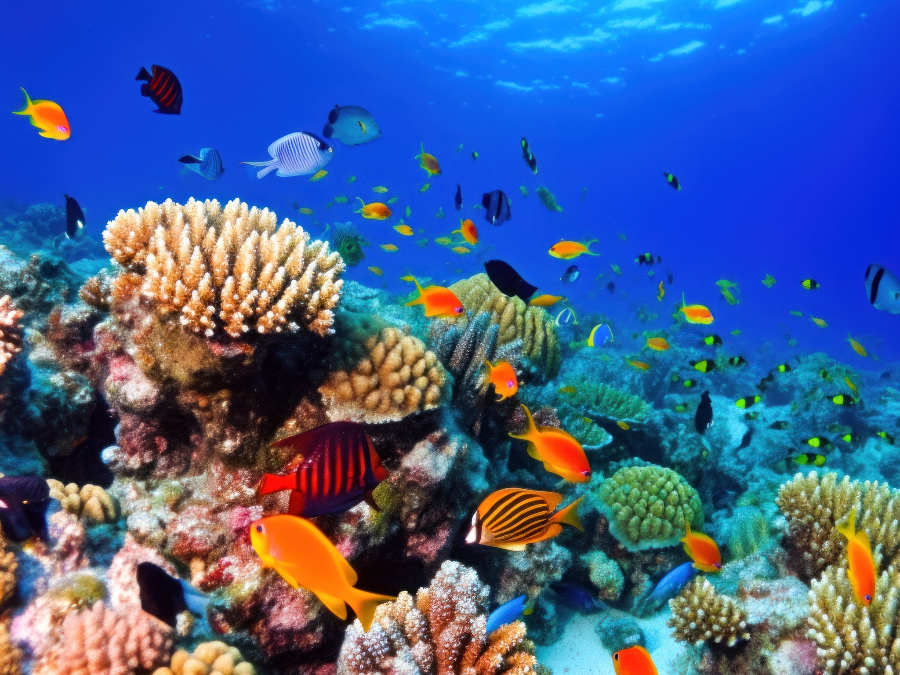
The waters surrounding the islands are so rich and wondrous that even the shallow areas, right along the coastline, offer a remarkable experience.
Sometimes, simply wading knee-deep into the water is enough to spot colorful fish beneath the azure surface, and it’s not uncommon to see harmless reef sharks as well. A special tourist activity here is ray or whale shark diving, particularly during the peak season when these majestic creatures venture into the warmer, shallower coastal waters in search of abundant food. Fishing enthusiasts will also find ideal spots here, where they can encounter fish never before seen or caught, ranging from smaller species to the larger "big game" ones. The vibrant marine life is mostly completely harmless, with only a few species posing a threat to humans. One of these is the master of camouflage, the stonefish, whose spines conceal a particularly potent neurotoxin, or the equally venomous lionfish, which we may encounter along the coral reefs.
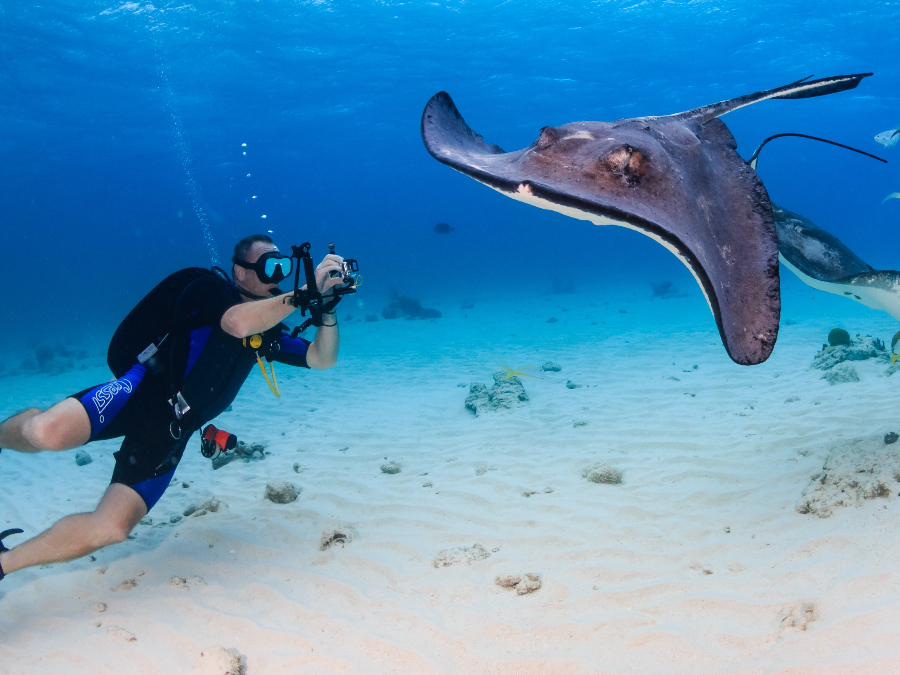
With adherence to the rules and careful awareness, these dangers can easily be avoided, and such accidents are rarely heard of. However, what the Maldives has been making the news for more frequently lately is a completely different kind of threat. With the highest point of the island chain reaching only 2.5 meters, and 80% of the area being less than one meter above sea level, it is one of the nations most threatened by global warming. Even a slight rise in sea levels poses a significant danger to the archipelago, and if that weren't enough, rising temperatures also accelerate the destruction of the warm-water coral reefs. It’s not unlikely that by the next century, the memory of the island chain will be preserved only in photos and videos.